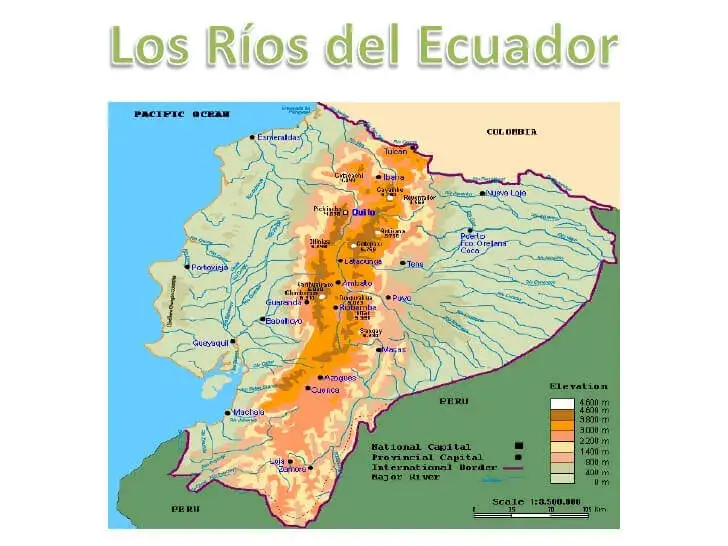How produce stickers contribute to climate change
Hello, people! This is our weekly newsletter on all things environmental, where we highlight trends and solutions that are moving us to a more sustainable world. (Sign up here to get it in your inbox every Thursday.)
This week:
- How produce stickers contribute to climate change
- Powering up: The biggest players in battery storage
- Building a net-zero home doesn’t mean it will sell
How produce stickers contribute to climate change

About three years ago, Susan Antler was at a composting facility in B.C. when a truck full of rotting avocados pulled up.
It was «51 feet, 52 feet [approx. 14 metres] — like, [a] massive truckload,» said Antler, executive director of the Compost Council of Canada. «And the facility just wouldn’t accept it.»
Why? Because each of those thousands of rotting avocados was «contaminated» by a little plastic PLU (or produce look-up) sticker. It carries a number, standardized around the globe, that identifies the type of produce and whether it’s conventionally or organically grown, to help cashiers enter the right price at the supermarket checkout.
Jane Proctor, vice-president of policy and issue management at the Canadian Produce Marketing Association, said while the stickers are voluntary, most chain supermarkets require them. «It is not a regulatory requirement,» she said. «It’s a business requirement.»
The stickers are too small to be screened out in the waste sorting process, but don’t break down during composting. Antler said they end up sprinkled as «foreign matter» through the finished product — compost that’s destined to be used to enrich soils in places such as gardens, farmland and parks.
The stickers aren’t toxic and don’t harm the compost — although presumably they add microplastics to the environment — so it’s mostly a cosmetic issue, Antler acknowledged. But there are strict guidelines about how much foreign matter is allowed in compost, especially higher grades. And too much can make compost unmarketable.
Mindful of the old adage «garbage in, garbage out,» composting plants that want to produce and sell higher grades of compost need to be careful about what raw materials they take.
In the case of the B.C. facility, Antler offered to remove the stickers from the avocados, but the composting plant manager declined. «He just sent the truck away, so that material went to landfill.» She’s pretty sure it happens all the time. «The scale of waste is massive.»
It’s not just a waste — it could also speed up climate change.
At a compost plant, organic matter typically decomposes in the presence of oxygen, generating CO2 and compost that can nourish plants. At a landfill, it decomposes without oxygen into methane, a greenhouse gas that has about 30 times the global warming impact of CO2 over a century. (Some organics plants use anaerobic digestion, which also generates methane, but it is captured and burned so it doesn’t go into the atmosphere.)
But there are solutions, including other ways to affix the PLU to bulk fruits and veggies, such as:
Paper stickers or certified compostable plastic stickers, which have been successfully tested in the U.S.
Ink stamps like the ones used to label eggs.
Proctor said produce sellers often don’t see the extra investment as worthwhile when many customers don’t have access to municipal composting. She added that the recent introduction of scannable barcodes on PLU stickers — which Canadian stores are expected to adopt soon — requires the labels to show fine detail and maintain durability, which only plastic enables.
In the meantime, you can help by making sure you take the little stickers off your fruit and veggie peels and rinds before tossing them in your green bin at home.
— Emily Chung
Reader feedback
Emily Chung’s piece on wood buildings last week garnered a lot of feedback from readers, some of whom were concerned about the safety of the material itself. «I have reservations regarding wooden highrise buildings,» said Bob Miller. «These include: Wood burns. Wood is not recyclable. Wood is subject to rot.»
This article from last year highlights the concerns of some fire chiefs and also includes a comment from a senior researcher at Natural Resources Canada.
Other readers were concerned about where all the wood would come from.
«Are you seriously promoting the denuding of our planet’s trees as a green solution! Methinks this is seriously flawed logic,» wrote Simon Faunt.
«We already cut and clear-cut, unfortunately, too many forests,» said Joan Thompson. «Can and will we replant enough trees to maintain the natural wildlife spaces, clean our air and prevent soil erosion… I’m not sure. We build and we build and we build. There are no restrictions. We need to consider each option carefully — pros and cons.»
Email us at [email protected].
Old issues of What on Earth? are right here.
The Big Picture: The major players in battery storage
Last week in this space, we discussed the stock market slide for a number of the best-known oil and gas companies. This week, we’re highlighting some of the biggest players in lithium-ion battery storage, which will be a key industry in the global transition away from fossil fuels. All of these companies supply car manufacturers (as well as electric utilities). In addition to upstart Tesla, there are a couple of Chinese newcomers — Contemporary Amperex Technology (CATL) and BYD — as well as more established names like South Korea’s LG Chem and Japan’s Panasonic. The chart below reflects 2018 figures for each company’s total storage capacity.

Hot and bothered: Provocative ideas from around the web
Oil companies are having a rough spell, and so are countries dependent on the profits from extracting oil. According to a report by the International Monetary Fund, as fossil fuel demand decreases, the wealth of Gulf oil producers like Saudi Arabia and the United Arab Emirates could dry up in 15 years.
- Picture it: see-through solar panels. The concept is still in the embryonic phase, but researchers believe it could be an energy-neutral way to power greenhouses because the wavelengths of light that enable photosynthesis for plants are separate from the wavelengths needed to create energy. In other words, these solar panels could facilitate both.
- Many environmentalists say that making some doubters appreciate the scale of carbon pollution is difficult because CO2 is invisible. This clever video illustrates what it would look like if your tailpipe emissions came out as solid chunks of carbon — or «car turds.»
Building a net-zero home doesn’t mean it will sell

Brad McLaughlin says it should be easy for a northern country like Canada to build the kind of home that is so efficient it makes more energy than it uses.
But McLaughlin, the general manager of MCL Construction Ltd. in Quispamsis, N.B., is beginning to wonder if reducing residential greenhouse gases is really a priority in this country.
His certified net-zero home has maxed out energy efficiency. The house has insulated concrete walls, triple glazed windows, 44 solar panels and a backup rechargeable battery system.
On a sub-zero February afternoon, it’s sending excess electricity back to the provincial grid in exchange for NB Power credits to be used on the coldest days, or at night when the sun is down.
But the three-bedroom, two-bath home stubbornly refuses to sell. It has been on and off the real estate market since 2017.
«It hasn’t moved,» McLaughlin said. «We had a lot of people through it.»
Starting out, McLaughlin’s asking price was $695,000. By May 2019, he had lowered it to $570,000. This week, he put the two-storey house back on the market at $495,000.
McLaughlin points to mortgage «stress tests» and indifference from bank-hired appraisers as obstacles pushing buyers away from these higher-than-average priced homes. McLaughlin feels the federal government could do more to kick-start construction of these kinds of homes.
His first suggestion would be to revamp the mortgage stress test introduced to cool red-hot housing markets in Vancouver and Toronto. McLaughlin said the test lacks flexibility and is locking people out of the net-zero-carbon housing market by denying them mortgages for homes with higher purchase prices, without allowing for the fact the buyer won’t have any heating and electricity costs.
He said appraisers are at a loss when it comes to a sustainable house like this.
«Around here, they just don’t know how to value it.…They just say, ‘Well, there’s a similar house down the street,'» he said. «Well, sure it might look the same, but it’s a lot different.»
McLaughlin isn’t alone in his thinking. The Canadian Home Builders Association and the Canadian Real Estate Association (CREA) are also calling for changes to the system. CREA national president Jason Stephen, who is a Saint John realtor, said the stress test should be adjusted to suit regional markets across the country.
«If this was a system that was brought in to address escalating housing prices, month over month, or year over year, we just don’t have that, which is why we always say there’s not one housing market [across] the whole country,» Stephen said.
During the 2019 election campaign, the federal Liberals promised to introduce a $5,000 grant to buyers of net-zero homes and to offer interest-free loans of up to $40,000 to homeowners and landlords for energy saving retrofits. The program has yet to be introduced.
Other efficiency programs are already available to builders and buyers in New Brunswick. NB Power offers as much as $10,000 in incentives for construction of energy-efficient homes, and Canada Mortgage and Housing Corporation has a 15 to 25 per cent discount on mortgage insurance costs, depending on the level of efficiency of the home.
— Connell Smith
Stay in touch!
Are there issues you’d like us to cover? Questions you want answered? Do you just want to share a kind word? We’d love to hear from you. Email us at [email protected].
Sign up hereto get What on Earth? in your inbox every Thursday.
Editor: Andre Mayer | Logo design: Sködt McNalty






